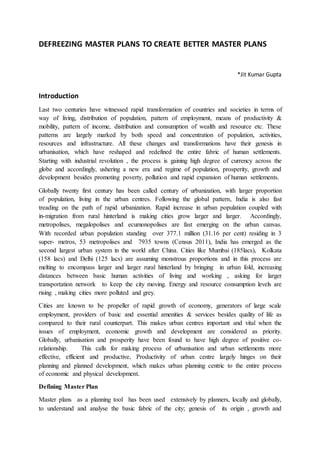The document discusses the significance of master plans in urban development, particularly in the context of rapid urbanization in India. It highlights the failures of existing master plans to address issues such as poverty, infrastructural challenges, and lack of stakeholder involvement, leading to unplanned growth. Furthermore, the text proposes a series of recommendations for creating more effective master plans that focus on inclusivity, sustainability, and active community participation.






